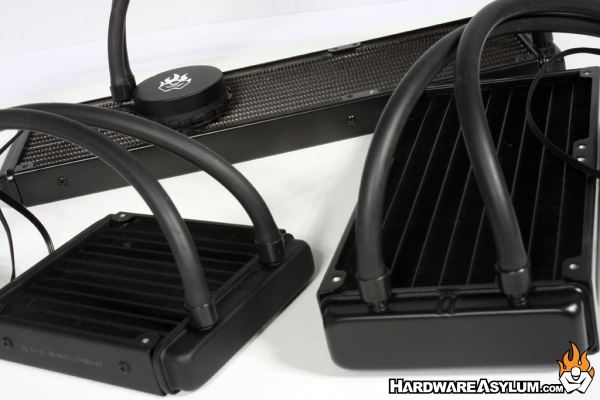Asetek Gen 4 AIO Cooler Review Roundup
Author: Dennis GarciaIntroduction
For those of you who may not know Asetek is a company that specializes in cooling solutions. Back in the day they were one of the first companies to put a small single stage phase chiller in a case for the sole purpose of increasing system performance. They called it VapoChill, and it was awesome. For most the case allowed users to run their system extremely cold to increase its lifespan. For others they used the case for performance increases because when you combine cold with frequency adjustments you get LOTs of overclocking potential.
I reviewed one of these units back in 2003 and ended up buying it from the distributor for use in future projects. Sadly, it is a bit underpowered for a modern PC but the concept is still quite awesome, if not loud.
A short time later Asetek began dabbling with watercooling solutions and hit the market hard with their WaterChill cooling solution. WaterChill was basically a DIY style water cooling system consisting of pond pumps, 12v to 120/240v relays, custom waterblocks, awesome installation hardware and Black Ice radiators. While most of the components are sourced from independent suppliers the real IP was the waterblocks and later some custom 12v pumps.
I again reviewed many of these units and was supremely impressed with the price to performance ratio. Sure you can get better cooling by making a few tweaks but they offered coolers for the enthusiast with a variety of different radiator configurations. WaterChill really matured the retail DIY watercooling market and made it what it is today.
The WaterChill system lasted for about 4 years which coincides with the emergence of the LARGE heatpipe coolers. These coolers couldn’t surpass watercooling performance but were cheaper, easier to install and, in some cases, just as good. While DIY watercooling was still popular with hardware enthusiasts however, building one is often cost prohibitive and introduces a maintenance issue that many mainstream users are not willing to deal with.
This is where the AIO watercooler comes to light. AIO (or All in One) watecooling takes the concept of a large DIY cooler and condenses down into two major components. The Pump and Waterblock combo and a remotely mounted radiator. Rubber hoses connect the two and allow the radiator to be mounted just about anywhere to maximize cooling performance. The cooling formula is also easy to understand. Larger radiator equals more heat capacity leaving fans to regulate temperature and noise. In some cases a single 120mm radiator is plenty while in other situations you may want a thicker radiator over doubling the fans.

The purpose of this review is twofold. First and formost I will be reviewing the latest Generation 4 AIO watercoolers from Asetek. I have three of them and they will be tested side by side on three different systems.
Results of these tests will give you the normal C/W (Celsius per Watt) numbers along with a good dicussion around what cooler is right for your system. Questions like "Do you need a triple fan radiator or will a larger dual fan be enough?" and "Is dual loading a thicker 120mm radiator better than multi fan solutions??" will be addressed.
This review / roundup should explain those things a little better and help you decide what cooler to buy or if the cooler you bought is really the correct choice.

